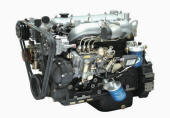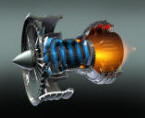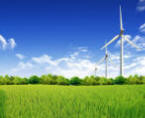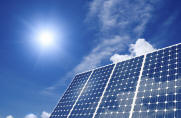|
Journal of Energy and Environmental Sustainability (JEES)
An official publication of the International Society for Energy, Environment
and Sustainability (ISEES)
Journal
Website
Link: www.jees.in
Home
Journal of Energy and Environmental Sustainability is
official publication of the International Society for Energy, Environment
and Sustainability dedicated to all the areas of conventional and renewable
energy that are relevant for environmental sustainability. The journal
publishes two issues in a year and offers a platform for high-quality
research in the interdisciplinary areas of energy and environmental science
and engineering.
About the journal
The journal publishes original articles and reviews on the
topics relevant to its scope. The
aim of the journal is to advance and disseminate knowledge in the relevant
areas of energy and environmental sustainability The
topics covered by the journal include biofuels, energy storage system, fuels
cells, solar energy, thermo-chemical conversion of biomass and
transportation. For detailed subject classification/topics, please refer
guide for authors.
Editors and Tentative Editorial board
Editor-in-Chief
Prof. Avinash Kumar Agarwal
Indian Institute of Technology
Kanpur, India
Honorary Executive Adviser
Prof. Ashok Pandey
CSIR-National Institute for
Interdisciplinary Science and Technology, Trivandrum, India
Editors:
• Prof Ajay Agarwal, USA
• Prof Franz Winter, Technical University, Vienna, Austria
• Prof. Ernst Wintner
Associate Editors
• Dr Thallada Bhaskar, CSIR-Indian Institute of Technology, Dehradun, India
• Prof Bhola Gurjar, Indian Institute of Technology, Roorkee, Rorrkee, India
• Dr Somrat Kerdsuwan, King Mongkuts University of Technology, North
Bangkok, Thailand
• Prof Abhijit Kushari, Indian Institute of Technology, Kanpur, India
• Prof Chang Sik Lee, Hanyang University, Seoul, South Korea
• Prof Achintya Mukhopadhyay, Jadavpur University, Kolkata, India
Members
• Prof. Vaibhav Arghode, Indian Institute of Technology, Kanpur, India
• Prof Guillermo R Castro, National University of La Plata, Argentina
• Dr Santanu De, Indian Institute of Technology, Kanpur, India
• Dr Atul Dhar, Indian Institute of Technology, Mandi, India
• Prof Guocheng Du, Jiangnan University, Wuxi, China
• Dr Aniruddha Gautam, Railway Divisional Superintendent Office, Lucknow,
India
• Prof Edgard Gnansounou, Ecole Polytechnique Federale de Lausanne,
Switzerland
• Prof Samir Khanal, University of Hawaii, Honolulu, USA
• Prof Akihiko Kondo, Kobe University, Japan
• Dr Sunil Kumar, National Environmental Engineering Research Institute,
Nagpur, India
• Prof Christian Larroche, Universite Blaise Pascal, Clermont Ferrand,
France
• Prof Duu Jong Lee, National Taiwan University, Taipei, Taiwan
• Prof Jin-Suk Lee, Korea Institute of Energy Research, Daejeon, South Korea
• Dr S Venkata Mohan, CSIR-Indian Institute of Chemical Technology,
Hyderabad, India
• Prof Vijayanand S Moholkar, Indian Institute of Technology, Guwahati,
India
• Prof Hao Huu Ngo, University of Technology, Sydney, Australia
• Dr Deepak Pant, VITO, Mol, Belgium
• Prof Maria Angeles Sanroman, University of Vigo, Vigo, Spain
• Prof Gerardo Saucedo-Castaneda, Metropolitan Autonomous University,
Iztapalapa, Mexico
• Dr Mani Sarathy, King Abdullah University of Science and Technology, Saudi
Arabia
• Dr Akhilendra Pratap Singh, Indian Institute of Technology, Kanpur, India
• Prof Carlos Ricardo Soccol, Federal University of Parana, Curitiba, Brazil
• Dr Sibendu Som, Argonne National Lab, USA
• Dr Rajeev Kumar Sukumaran, National Institute for Interdisciplinary
Science and Technology, Trivandrum, India
• Prof Mohammad Taherzadeh, University of Boras, Boras, Sweden
• Prof Jose Teixeira, University of Minho, Portugal
• Prof Jonathan WC Wong, Hong Kong Baptist University, Hong Kong
• Prof Yonghong Wu, Chinese Academy of Sciences, Institute of Soil Sciences,
Nanjing, China
• Dr YH Taufiq Yap, Universiti Putra Malaysia, Selangor, Malaysia
• Dr Sunita Varjani, Gujarat Pollution Control Board, Gandhinagar, India
Guide for authors
Submission of papers: Manuscripts
from all over the world should be submitted to the editor-in-chief, Prof
Avinash Agarwal, by email as single PDF file containing text, tables and
figures.
Covering letter to the editor: When
submitting the manuscript, it is mandatory to include a covering letter to
the editor. The covering letter must state that it is the original work of
the authors and all the authors mutually agree that it should be submitted
to the JEES. Please select the topic of the submission from the subject
classification list (see guide for authors and select the most suitable ONE
ONLY).
Subject
classification
10.000
Energy Sustainability
10.010 Energy saving and education
10.020 Energy storage
10.030 Modeling
10.040 Social/economic studies
10.050 Sustainable fuels and energy sources
20.000 Environment Sustainability
20.010 Climate change
20.020 Emission control
20.030 Energy and green-house gases balances
20.040 Environment impact assessment
20.050 Legislations and regulations
20.060 Life cycle assessment
30.000 Fossil and Non-Fossil Sources of Energy
30.010 Coal and lignite
30.020 Emission and emission control
30.030 Energy materials
30.040 Natural gas and oil
30.050 Non-hydrocarbon energy
40.000 New and Renewable Sources/Processes of Energy
40.010 Algae
40.020 Biomass
40.030 Catalysis
40.040 Combustion
40.060 Pyrolysis
50.000 Solid Waste Management
50.010 Incineration
50.020 Recycling
50.030 Urban/landfill mining
60.000 Thermal Energy Devices
60.010
Boilers & Combustors
60.020 Fuel Cells
60/030 Internal Combustion Engines
60.040 Gas Turbines
60.050 Steam Turbines
60.060 Hydraulic Turbines
70.000 Waste Treatment
70.010 Industrial effluent treatment
70.020 Municipal waste treatment
Referees: Please
submit, with the manuscript, the names, addresses and e-mail addresses of
five potential referees. Note that the editors retain the sole right to
decide whether or not the suggested reviewers are used.
Preparation of manuscript: Authors
must follow guide for authors strictly, failing which the manuscripts would
be rejected without review. Editors reserve the right to adjust the style to
certain standards of uniformity.
Structure: Follow
this order when preparing the manuscripts: Title, Authors, Affiliations,
Abstract, Keywords, Introduction, Materials and Methods, Results and
Discussion, Conclusions, Acknowledgements, References, Figure Captions,
Tables and Figures. The corresponding author (one only) should be identified
with an asterisk and footnote.
Text Layout: Use
double spacing and wide (3 cm) margins on white paper. (Avoid full
justification, i.e., do not use a constant right-hand margin.) Ensure that
each new paragraph is clearly indicated. Each table and figure should be
placed on separate pages at the end of the manuscript. Number all the pages
consecutively, use 12-point Roman font throughout.
Page length:
Maximum page length can be 35 and 45 pages for original article and review
paper, respectively, including text, references, tables and figures. Each
figure and table must be put separately on a separate page.
Article structure
Subdivision - numbered sections :
Divide your article into clearly defined and numbered sections. Subsections
should be numbered 1.1 (then 1.1.1, 1.1.2, ...), 1.2, etc. (the abstract is
not included in section numbering).
Introduction:
Provide an adequate background, avoiding a detailed literature survey or a
summary of the results on the topic. Most recent and relevant developments
on the topic must be brought out here. The last paragraph should state the
objective of the study.
Material and methods:
This section should provide sufficient detail to allow the work to be
reproduced. Methods already published should be indicated by a reference:
only relevant modifications should be described.
Results and Discussion: Results
should be clear and concise and be part of a single section, discussing the
significance of the results of the work, not repeat them. Extensive citation
and discussion of the published literature should be avoided.
Conclusions: The
main conclusions drawn from results should be presented in a short
Conclusions section (maximum 150 words).
Title page information
• Title should be concise and informative. It must not contain any
abbreviation.
• Author names and affiliations. Where the family name may be ambiguous
(e.g., a double name), please indicate this clearly. Present the authors'
affiliation addresses (where the actual work was done) below the names.
Indicate all affiliations with a lower-case superscript letter immediately
after the author's name and in front of the appropriate address. Provide the
full postal address of each affiliation, including the country name and, if
available, the e-mail address of each author.
• Corresponding author: Indicate one author who will handle correspondence
at all the stages of refereeing, publication and post-publication. Provide
the phone and fax numbers (with country and area code), e-mail address and
complete postal address.
• Present/permanent address. If an author has moved since the work described
in the article was done, or was visiting at the time, a 'Present address'
(or 'Permanent address') may be indicated as a footnote to that author's
name. The address at which the author actually did the work must be retained
as the main, affiliation address. Superscript Arabic numerals are used for
such footnotes.
Abstract
A concise and factual abstract is required. Each paper should
be provided with an abstract of about 100-150 words. The abstract should
state firstly the aim of the study and then give main results. Abstract
should not contain any reference.
Keywords
Immediately after the abstract provide a maximum of five
keywords.
Abbreviations
Define abbreviations in the text on first appearance. Avoid any non-standard
abbreviation or give them as a
separate section.
Units
Follow internationally accepted rules and conventions: use the international
system of units (SI). If other units are mentioned, please give their
equivalent in SI.
Math formulae
Present simple formulae in the line of normal text where possible and use
the solidus (/) instead of a horizontal line for small fractional terms,
e.g., X/Y. In principle, variables are to be presented in italics. Powers of
e are often more conveniently denoted by exp. Number consecutively any
equations that have to be displayed separately from the text (if referred to
explicitly in the text).
Footnotes
As far as possible, footnotes should be avoided. In the tables, indicate
each footnote with a superscript lowercase letter
Figures and captions
There can be a maximum of SIX
figures in the article, which must be numbered. All
photographs, schemas, graphs and diagrams to be referred to as figures.
Ensure that each figure has a caption. Captions should
be supplied separately on a page. Multiple figures can be expressed as
one figure (for e.g. 1a, 1b, 1c etc...).The Journal discourages publication
of simple one line graphs/figures, pattern figures, conventional spectra
(X-ray, FTIR, UV, NMR, etc) and SEM photographs of a routine nature.
Tables
There can be a maximum of SIX
tables in the article, which must be numbered. Heading should be
placed above the table .Do
not put vertical rules in the table. The Journal discourages publication of
simple one parameter tables; such information should be preferably described
in the text itself.
References
In the text the number of the reference should be given in
square brackets. Only essential references, which are directly referred to
in the text, should be included in the reference list.There
can be maximum 40 and 100 references for
the original and review articles, respectively
Citation
in text
Ensure that every reference cited in the text is present in
the reference list (and vice-versa).
Unpublished results and personal communications are not recommended in the
reference list, but may be mentioned in the text.
Web references
As a minimum, the full URL should be given and the date when the reference
was last accessed. Any further information, if known (DOI, author names,
dates, reference to a source publication, etc.), should also be given.
Reference style
Text: All
citations in the text should refer to:
1. Single author: the author's name (without initials) and the year
of publication;
2. Two authors: both authors' names and the year of publication;
3. Three or more authors: first author's name, followed by 'et al.'
and the year of publication.
Citations may be made directly or parenthetically.
Examples: 'as demonstrated (Allan, 2000a, 2000b, 1999; Allan
and Jones, 1999). Kramer et al. (2010) have recently shown ....'
List: References should be arranged
first alphabetically and
numbered then numerically to show the total number of references in the
article. More than one reference from the same author(s) in the same year
must be identified by the letters 'a', 'b', 'c', etc., placed after the year
of publication.
Examples:
Reference to a journal publication:
Van der Geer, J., Hanraads, J.A.J., Lupton, R.A., 2010. The art of writing a
scientific article. J. Sci. Commun. 163, 51–59.
Reference to a book:
Strunk Jr., W., White, E.B., 2000. The Elements of Style, fourth ed.
Longman, New York.
Reference to a chapter in an edited book:
Mettam, G.R., Adams, L.B., 2009. How to prepare an electronic version of
your article, in: Jones, B.S., Smith , R.Z. (Eds.), Introduction to the
Electronic Age. E-Publishing Inc., New York, pp. 281–304.
References in the list should be placed first alphabetically, then numbered
chronologically.
1. Mettam, G.R., Adams, L.B., 2009. How to prepare an
electronic version of your article, in: Jones, B.S., Smith , R.Z. (Eds.),
Introduction to the Electronic Age. E-Publishing Inc., New York, pp.
281-304.
2. Strunk Jr., W., White, E.B., 2000. The Elements of Style, fourth ed.
Longman, New York.
3. Van der Geer, J., Hanraads, J.A.J., Lupton, R.A., 2010. The art of
writing a scientific article. J. Sci. Commun. 163, 51-59.
4....
Journal abbreviations source
Journal names should be abbreviated according to the List of title
word abbreviations: http://www.issn.org/2-22661-LTWA-online.php.
Manuscript Submission
Authors can submit their manuscript to Prof. Ashok Pandey. His contact
details are given below.
Prof Ashok Pandey
Eminent Scientist
Center of Innovative and Applied Bioprocessing
C-127, 2nd Floor, Phase 8 Industrial Area, SAS Nagar
Mohali-160 071, Punjab, India
Email: pandey@niist.res.in
Publication of Articles
After acceptance, the Journal will publish articles quickly both online and
in print.
Proofs
One set of page proofs (as PDF files) will be sent by e-mail
to the corresponding author. PDF proofs can be annotated for corrections or
you may list the corrections (including replies to the Query Form) and
return them to editor by email. Please list your corrections
quoting line number. If, for any reason, this is not possible, then mark the
corrections and any other comments (including replies to the Query Form) on
a printout of your proof and return by fax, or scan the pages and e-mail, or
by post. Please use this proof only for checking the typesetting, editing,
completeness and correctness of the text, tables and figures. Significant
changes to the article as accepted for publication will only be considered
at this stage with permission from the Editor. Corrections must be returned
within 48 hours.
Offprint
The corresponding author, at no cost, will be provided with a
PDF file of the article via e-mail. Paper reprint can be obtained on charge
basis, which must be ordered at the time of proofs correction.
|


.jpg)



